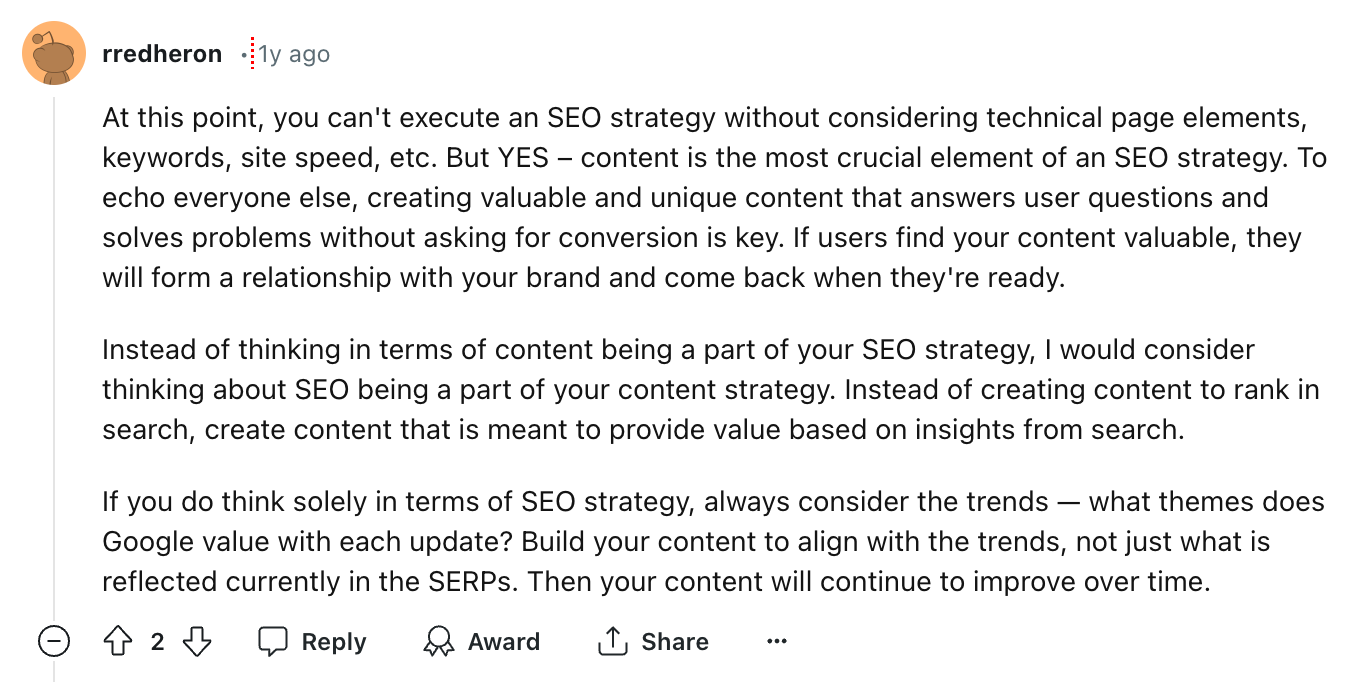Jeffrey Kirk mentions how responding to reviews can enhance user engagement. It sends positive signals to Google and improves search engine rankings. He highlights that responding to reviews adds fresh and relevant content. This is especially when responses include relevant keywords. Additionally, addressing negative reviews can mitigate reputation damage and enhance local SEO efforts. It signals active management and engagement with the local customer base.
Snapps courses are now available
The top SEO tips for small businesses are:
- Set up your Google My Business (GMB) profile
- Encourage customers to leave reviews and manage them
- Install on-site SEO
- Focus on local SEO
- Build authority with backlinks and citations
- Expand your target through advertising
- Regularly track your small business website
68% of online experiences begin with a search engine. Yet, many local businesses neglect the power of Search Engine Optimization (SEO). As the digital market develops, it becomes harder to maintain a competitive edge. There’s been a change in user behavior and the sudden surge of AI. But even with this shift, SEO is still a must in factors like search equity and crawl budget.
The body content of your post goes here. To edit this text, click on it and delete this default text and start typing your own or paste your own from a different source.

SEO changes its rules overtime. But don’t worry, the main idea stays the same: making your website easy to use and performing well. Nowadays, SEO allows your local business to be visible. People in your neighborhood can discover your shop when looking for something nearby.

SEO means not only acquiring the related tools. It involves approaches on-page and off-page. For instance, writing good content on your site and sharing it on social media. Also, maximizing Google can help you rank more on its search engine.

SEO gives you data to think about what people are searching for when they look for your business. SEO reaches the right people, and it’s up to you to show how you understand their problems and give them the solution. This way, you remain visible. You build your website and turn more viewers into customers.

With these said, this article will give you seven tips to help your small business websites. We are going to talk about the importance of each tip and how it can bring visible results to your business.
1. Set Up Your GMB Small Business Profile
First, set up your Google My Business (GMB) profile. This a free tool that allows you to manage your business across Google. All you have to do is provide your address, phone number, services, and hours of operation. This profile holds significant importance. It helps you rank 32% once optimized. You allow potential customers to find your business along with Google.

Aside from business information, you can choose categories on what your business offers. If you’re an aerobics business, select categories like 'aero dance class' or 'aerobics instructor'. These categories allow Google to improve your visibility for related searches.
Upload high-quality images and videos. Your business logo, exterior, interior, team, and products should be of good quality. Update them so you can keep your profile more engaging. You can also post them through Google Posts. Share updates, offers, events, and new products. This is an organic way to attract leads.
Keep in mind to update your GMB listings once in a while. You may be missing important information. Most common information missed are the hours, website URLs, and phone numbers. If people can’t find the information they are looking for, they’ll turn into your competitors.
2. Encourage and Manage Website Reviews
Encouraging and managing reviews enhances your online reputation as a small business. It builds trust with potential customers and improves local SEO performance. Whether it be positive or negative, request reviews and testimonials from your customers. 98% of potential clients read online reviews. It is important that what you place on your website can affect your consumer’s decision making.
You can follow up once transactions are complete with your customers. This can be thorough in person, via email, or a message. You can leave a direct link or QR codes on receipts to simplify the process. Respond to these reviews too. Show that you value customer feedback. If it’s a positive review, thank the customer and express your appreciation. If it’s a negative review, address it, apologize, and offer a solution to their problems. Install changes in this feedback and enhance your operations. This can help you show your dedication to providing excellent service.

3. Install On-Site SEO
Implementing on-site SEO allows your individual web pages to rank higher. Also known as on-page SEO, you can attract more relevant traffic from search engines. 60% of marketers can attest that this strategy is the highest quality source of leads.

Small Business Keyword Research
To make the most out of this tip, you need to start with your keyword research. You can use tools like Google Keyword Planner to find relevant local keywords. Incorporate them into your website content, meta descriptions, and titles. But make sure not to overstuff them! Here are a few tips:
- Title Tags: Should contain only 50 to 60 characters for greatest optimization.
- Meta Descriptions: The most will be 10 keyword phrases.
- Website Content:
A 1000-word article should have 1 primary keyword.Also, add 5 to 6 secondary keywords.

Small Business Content Strategy
After keyword research, create an effective content strategy. Start blogs that focus on topics related to your industry or in your location. Make sure that your topics can address the problems and concerns of your audience. This is how you can keep your audience engaged. You can also create infographics, videos, and how-to guides.
For instance, instead of something general on “How to Optimize a Website for SEO,” you can be more specific. Focus on “Why Backlinks are Important for SEO in 2024.” Being consistent is key. Make sure that you update your content so it is relevant and fresh.
Add internal links within your articles. This is one way to keep customers on your website. It navigates your site and distributes the authority through your website pages.

Technical SEO for Your Small Business
Technical SEO allows you to load your sites and secure your website data. This is an important aspect to consider. Also, your website can be as mobile-friendly as possible when you focus on technical SEO. Consider tools like Google’s Mobile-Friendly Test and PageSpeed insights. This increases your chances of getting as much as 54% of website traffic coming from mobile users. Other ways to install technical SEO are to:
- Style your webpage to make it look good using CSS.
- Analyze the behavior of your small business website through JavaScript.
- Learn to upload your website to a hosting service.
- Create a file through Robots.txt to guide search engines on which pages to crawl.
- Reduce the size of your HTML, CSS, and JavaScript files.
- Add a special code like Schema markup. This helps search engines understand your content better.
- Get and install SSL certificates that protect your site and its visitors.

4. Focus on Your Website’s Local SEO
Local SEO is effective. 46% of all Google searches try to look for a local business. This makes it easier for you to find potential customers. Local SEO helps your business appear in search results. Aside from a GMB profile, you can also use your keyword research to become locally relevant.

Incorporate location-specific phrases by stating your service and where you’re at. “Lawn services near me: " or "Lawn service in Houston, Texas” is a good example. You can place this onto your content, meta tags, headings, and URLs. You can also collaborate with local businesses, sponsorships, and other communities. Taking part in local events results in people mentioning you on their local website. This enhances local SEO overall.

In his YouTube video, Tim Richard mentions how Local SEO helped him in search engine rankings. He found that structuring websites for local search enhances a business's online visibility. Accurate business information to targeted content creation drives organic traffic and improves rankings. Local SEO aids in establishing a strong local presence. It also proves effective in engaging customers and generating reviews.
5. Build Authority with Backlinks and Citations
Building your authority with backlinks and citations can help you with your website’s SEO. Backlinks are links from reputable websites that incorporate on your site. The most top-ranking pages get “followed” backlinks from new websites. This is at the rate of +5% to 14.5% per month. With this said, backlinks can make you credible. It builds your authority and keeps you up on search engines. As a result, you get backlinks from new websites as well.

Boosting your backlinks happens when you focus on quality over quantity. High-quality backlinks will always boost your credibility. Guest posting is a practical method for acquiring backlinks. Write articles for local or industry-specific websites. It gains backlinks and positions you as an expert in your field.
You can also earn valuable backlinks on reputable news sites. Be careful not to harm your site’s reputation with random backlinks that are spammy. They lead to penalties from search engines. To avoid this, you can focus on building relationships with the reputable ones. Aim for businesses with high domain authority.
We mentioned earlier that creating a GMB profile involves filling up business information. That’s what we call citations. Listing your business’s name, address, and phone number (NAP) increases search engine visibility. Aside from Google, you can also list your business in Yelp, Bing Places, Yahoo Local, and Yellow Pages.
Do not ignore local citations. Some are overlooking local citations. Little did they know this improves local search rankings. List your business in all your local directories and citation sites. Maintain consistency to avoid confusing search engines and potential customers.
6. Expand Your Target through Advertising
Expanding your target through advertising is a powerful SEO tip for small businesses. Aside from increasing visibility, you can drive traffic to your website. Through digital advertising and social media, you can have immediate results. Google Ads and social media ads target consumers. It studies demographics, interests, and online behavior. With these ads, your small business can attract those interested in your services.

Just a tip: direct your ads to your specific service pages rather than your homepage. It improves conversion rates because consumers choose those relevant to their search intent. Let’s say you run a local bakery, target ads for your specialty cake. This can lead to higher engagement and sales compared to general homepage ads.

7. Regularly Track Your Small Business Website
Regularly track your website. You need to make sure that the website is running smoothly, secure, and user-friendly. This continuous process involves tracking traffic, search rankings, and other technical issues. By looking at these metrics, you can identify and resolve problems. 80% of users would not use a website if they experience downtime. This implies that you may lose sales and rank low on search engines. Here are some tools to help check your website:
- Google Analytics: This tool monitors your website’s traffic, visitor behavior, and where your traffic is coming from.
- Google Search Console: Tracks your search rankings and any crawl errors that may affect your site’s visibility.
- Regular Audits: This identifies any issues that could affect your SEO. Check broken links, optimize load times, and SSL certificates for secure connections.

9 Essential SEO Tools for Small Business Websites
You’ll need tools to help you boost your on-site and off-site SEO website performance. Here are the top paid SEO tools and free tools that you can consider:
Top Paid SEO Tools
- Snappseo: Identifies critical technical SEO issues to enhance website health and performance. Provides reports quickly and starts at $19/month.
- Semrush: Comprehensive suite for keyword research, site audits, and backlink analysis. Starts at $99.95/month.
- Moz Pro: Offers keyword research, link building, and site audits. Starts at $99/month.
- Ahrefs: Known for backlink analysis and keyword difficulty scoring. Starts at $99/month.
- Surfer SEO: Focuses on content optimization and formatting recommendations. Starts at $89/month.
Free SEO Tools
- Google Keyword Planner: Great for keyword research.
- Google Search Console: Robust tool for website monitoring.
- Answer the Public: Provides content ideas, limited free searches.
- Google Trends: Shows trending topics and search terms.
The free SEO tools come with its disadvantages. There are limits to searches, monitoring and research, unlike the ones you pay for. Snappseo is the perfect choice for small businesses within a budget. It improves ranking by giving data that can boost your presence in search engines.
Advantages of SEO for Small Businesses
You don’t have to worry about your brand’s online presence at SEO. You can attract the right audience with your products and the right SEO tools. Aside from that, your business can get:
- Traffic and Leads Increase: SEO brings high-quality, targeted leads to small businesses. 60% of marketers identify SEO as their top source of leads.
- ROI is High: SEO offers the highest return on investment (ROI) among digital marketing strategies. It is a must in your marketing plan.
- Targeting and Conversion Can Improve: SEO attracts visitors searching for products or services. It boasts a 14.6% average conversion rate compared to 1.7% for traditional methods.
- Long-Term Benefits: SEO requires time and effort to show results. But, it provides long-term benefits. Pay-per-click (PPC) advertising, which stops driving traffic once the budget ends.
- Your Brand is More Credible: High SEO rankings increase brand credibility. When you top in search engines, this signals that you are trustworthy. It encourages higher consumer trust and sales.
Factors in Choosing the Right Website Platform for SEO
The right website platform for SEO allows you to solve your ranking issues. If your platform now is not doing that job, you need to consider migrating to a more SEO-friendly platform. Below are a few tips on how to choose the right website platform.
- Ease of Use: For starters, choose a website builder with a drag-and-drop interface. These platforms simplify the website creation process for your small business website.
- Customizable URL Structures: The builder needs to create clean, SEO-friendly URLs. Avoid platforms that generate URLS automatically.
- Mobile Responsiveness: Google likes mobile-friendly websites. Choose a builder that offers responsive design templates on all devices.
- Fast Loading Times: Site speed is a significant ranking factor. Opt for a builder that guarantees fast load times and optimal performance.
- Built-in SEO Tools: Some builders come with integrated SEO tools. They guide you through the optimization process. To optimize for SEO, you need these tools.
- Blog Integration: Bogging is a great way to keep your content fresh and attract visitors. Choose a platform that offers robust blogging functionalities.
- Built-in Analytics: Some builders offer integrated analytics to track your site’s performance. Pick a website builder that can analyze your small business website’s performance.
- Customer Support: Reliable customer support can help resolve any issues that may arise. You need a platform that has excellent support services.
Effective SEO Results for your Small Business Website with Snapps.ai!
Snapps.ai is the right website builder for your small business. It enhances your online presence through effective SEO strategies. As a small business website, you may not be into coding. Snapps.ai makes it simple for you to create a website with its drag-and-drop editor. For more flexibility, Snapps.ai allows access to JavaScript, HTML, and CSS.
Moreover, Snapps.ai comes with SEO at its core. It supports customizable URL structures, meta tags, and descriptions. These can optimize your on-page SEO. Plus, it is mobile-friendly!
This platform delivers fast website performance for Google Core Web Vitals. It guarantees a 99.99% uptime so your website is alive and at its best to entertain customers. Also, its reliable customer support allows you to access help whenever needed. You don’t have to worry about any SEO issues. Snapps.ai maintains and improves your website with no hidden fees.
Recent Articles
Our Support Heroes Are Here For You
Don’t waste time on tedious manual tasks. Let Automation do it for you. Simplify workflows, reduce errors, and save time for solving more important problems.



